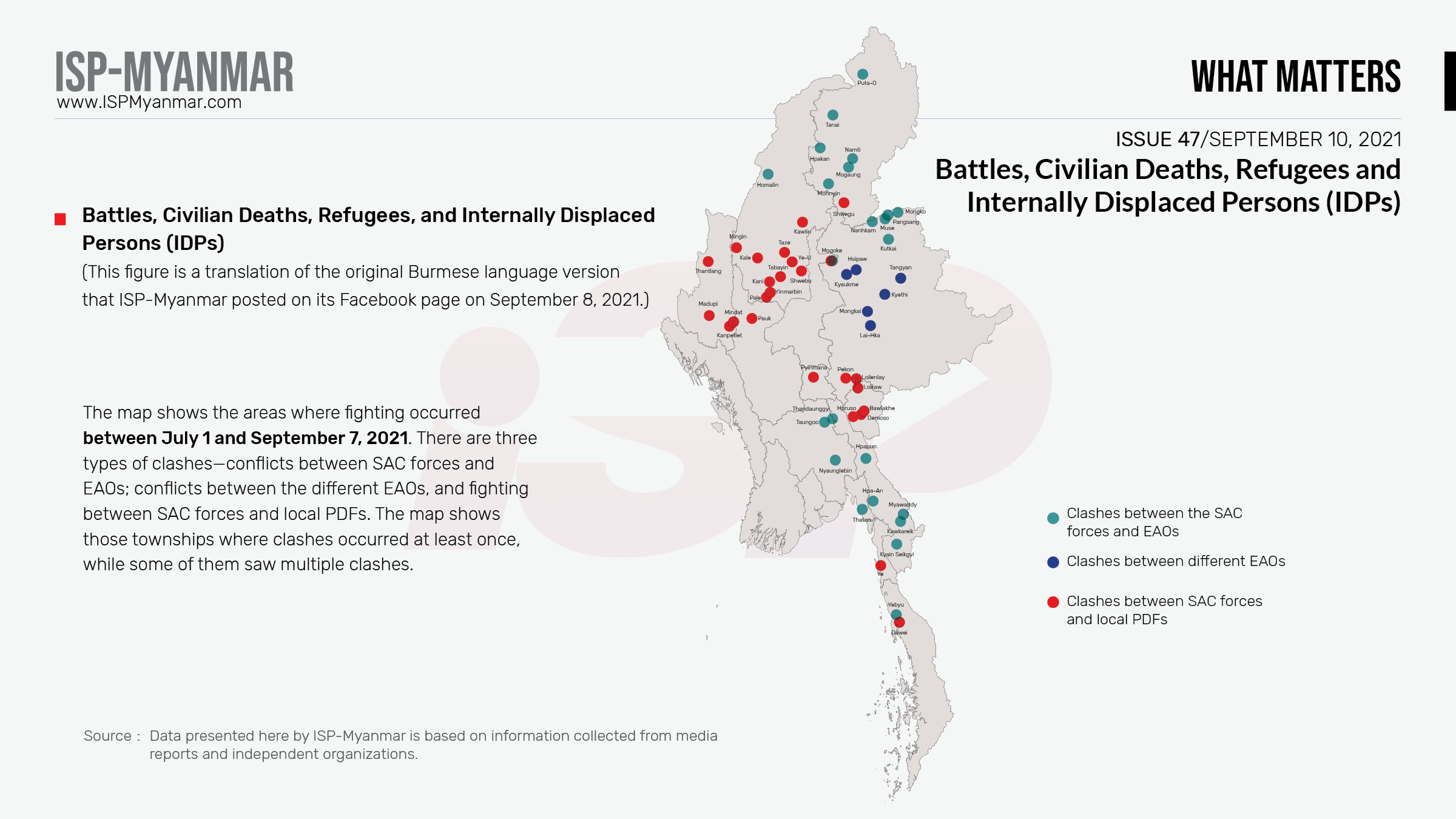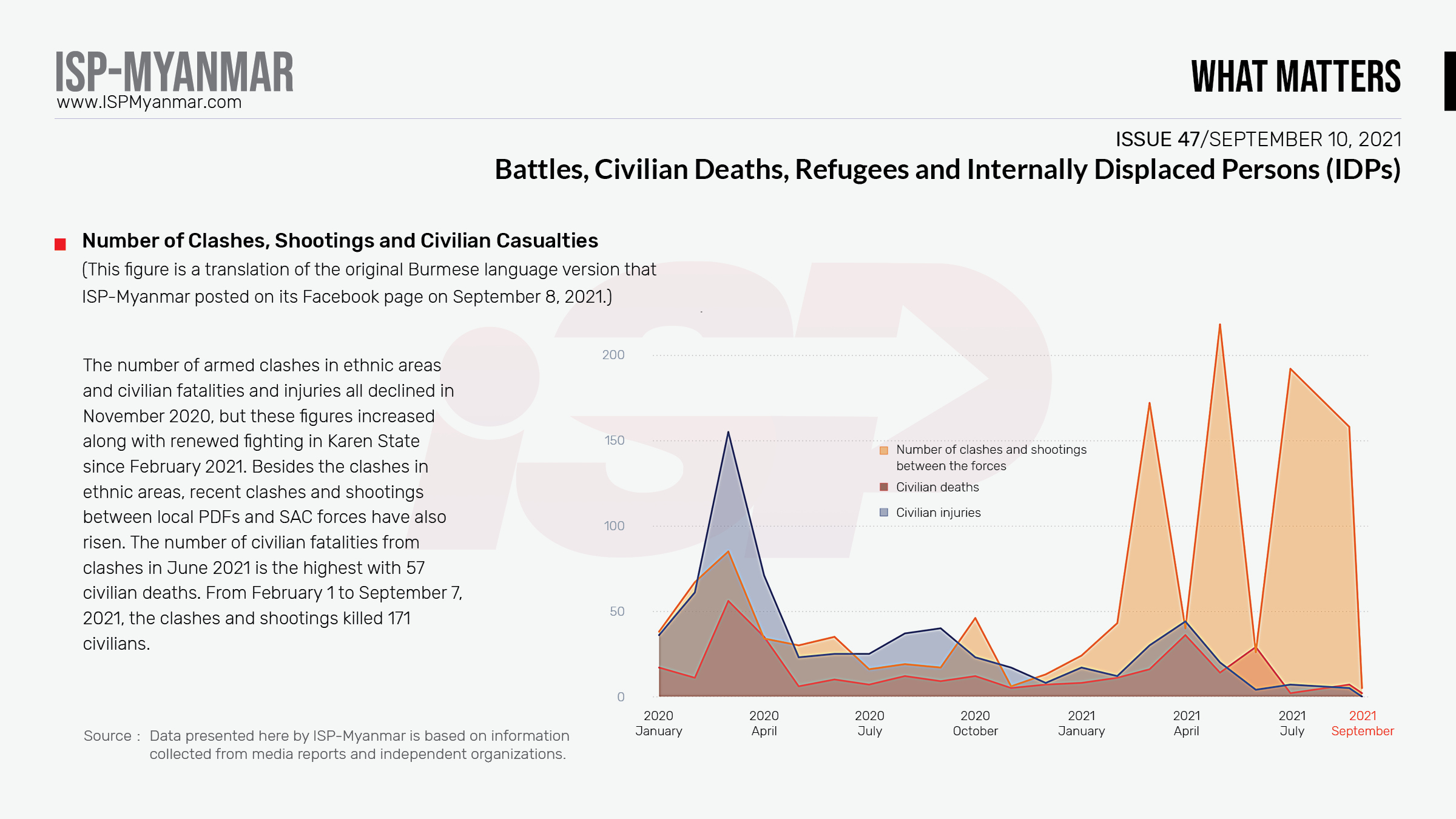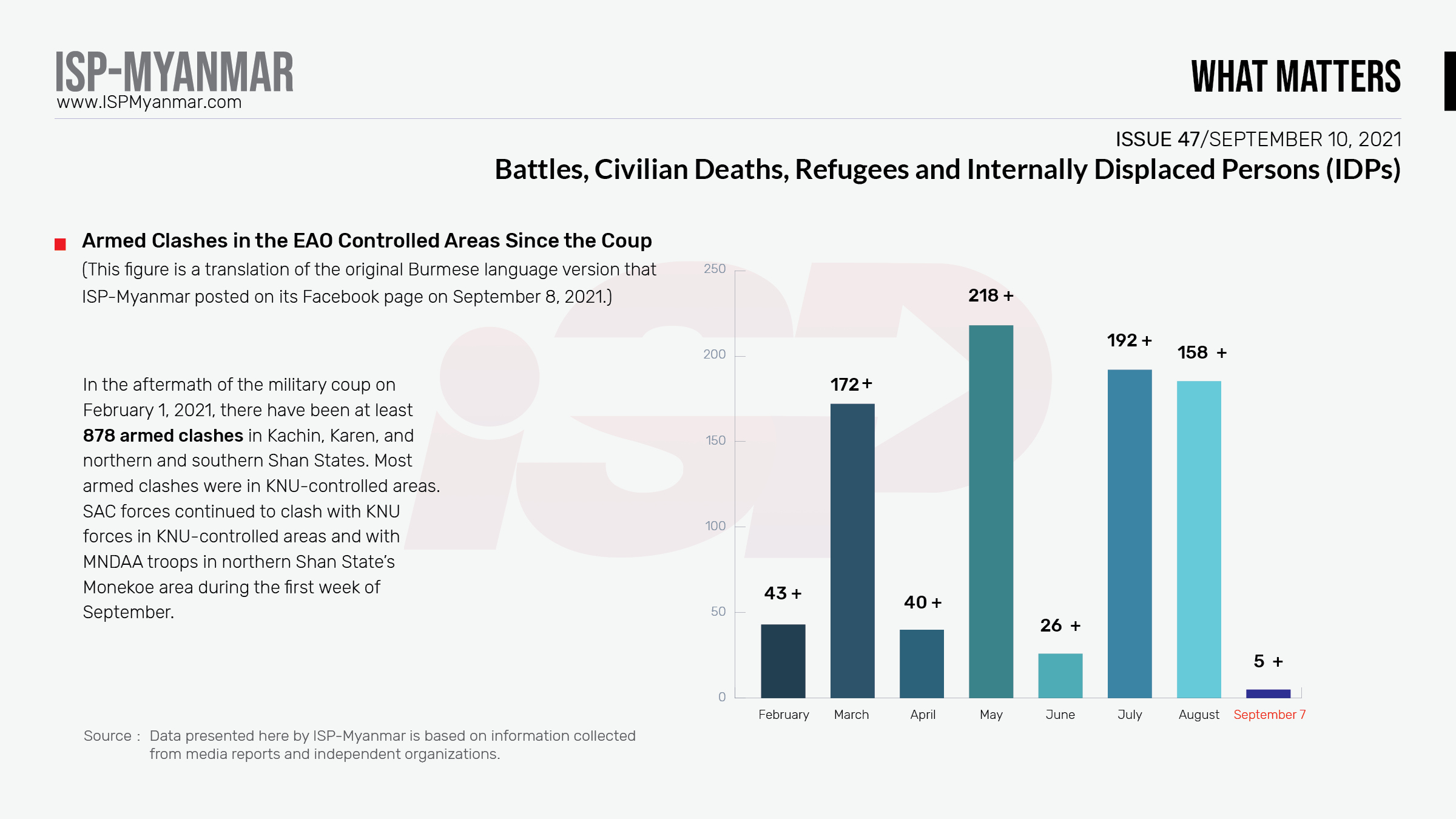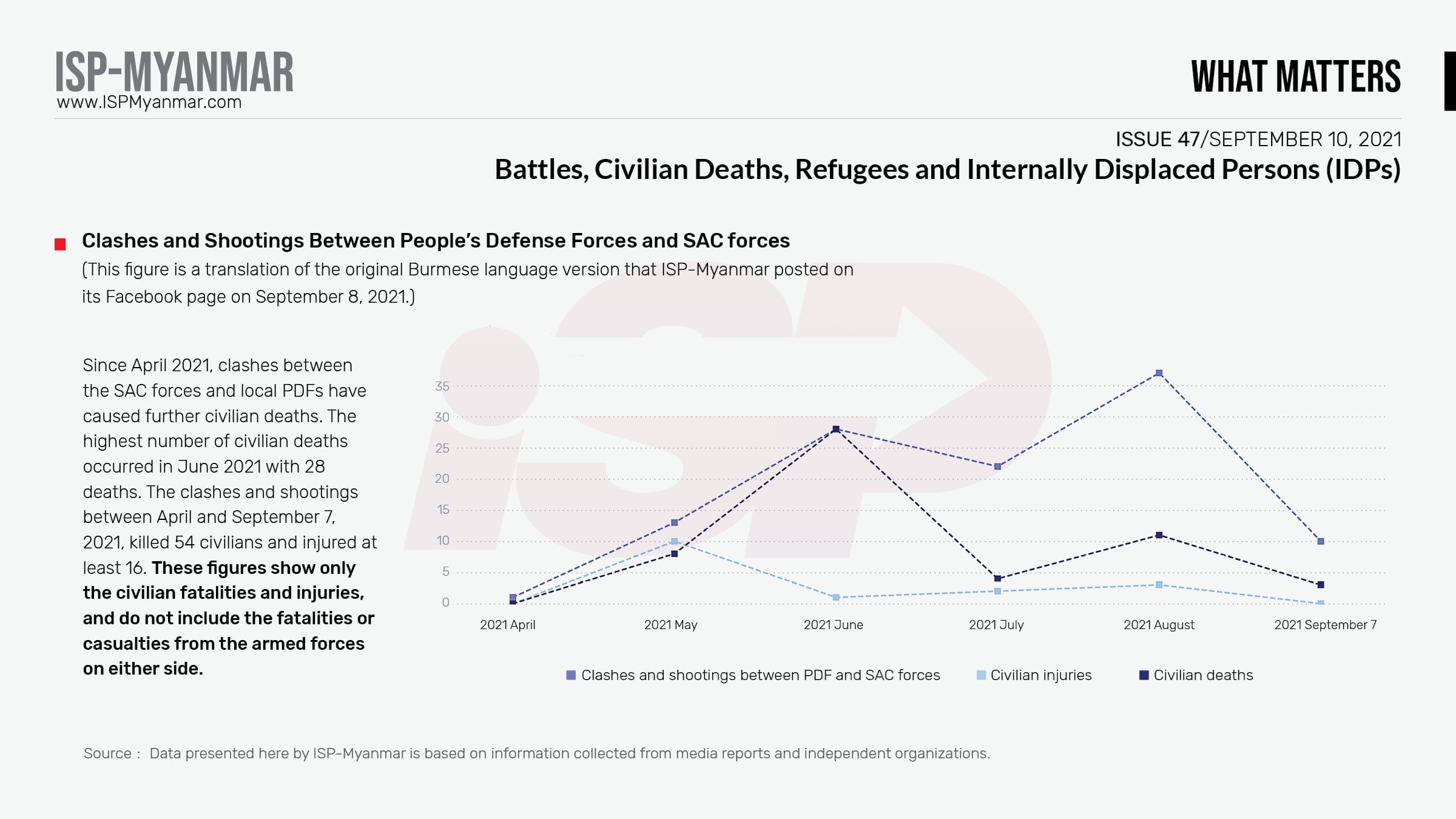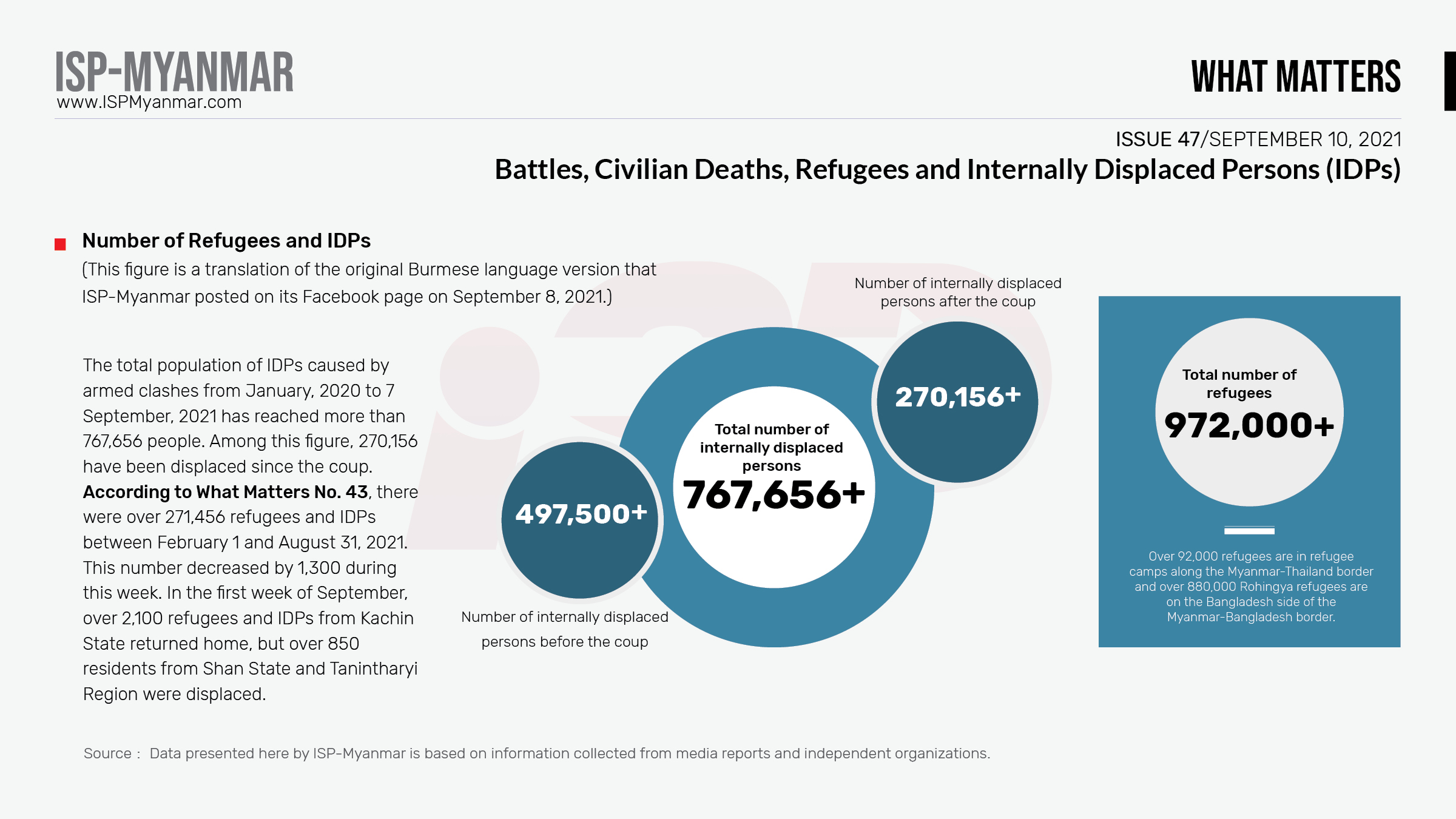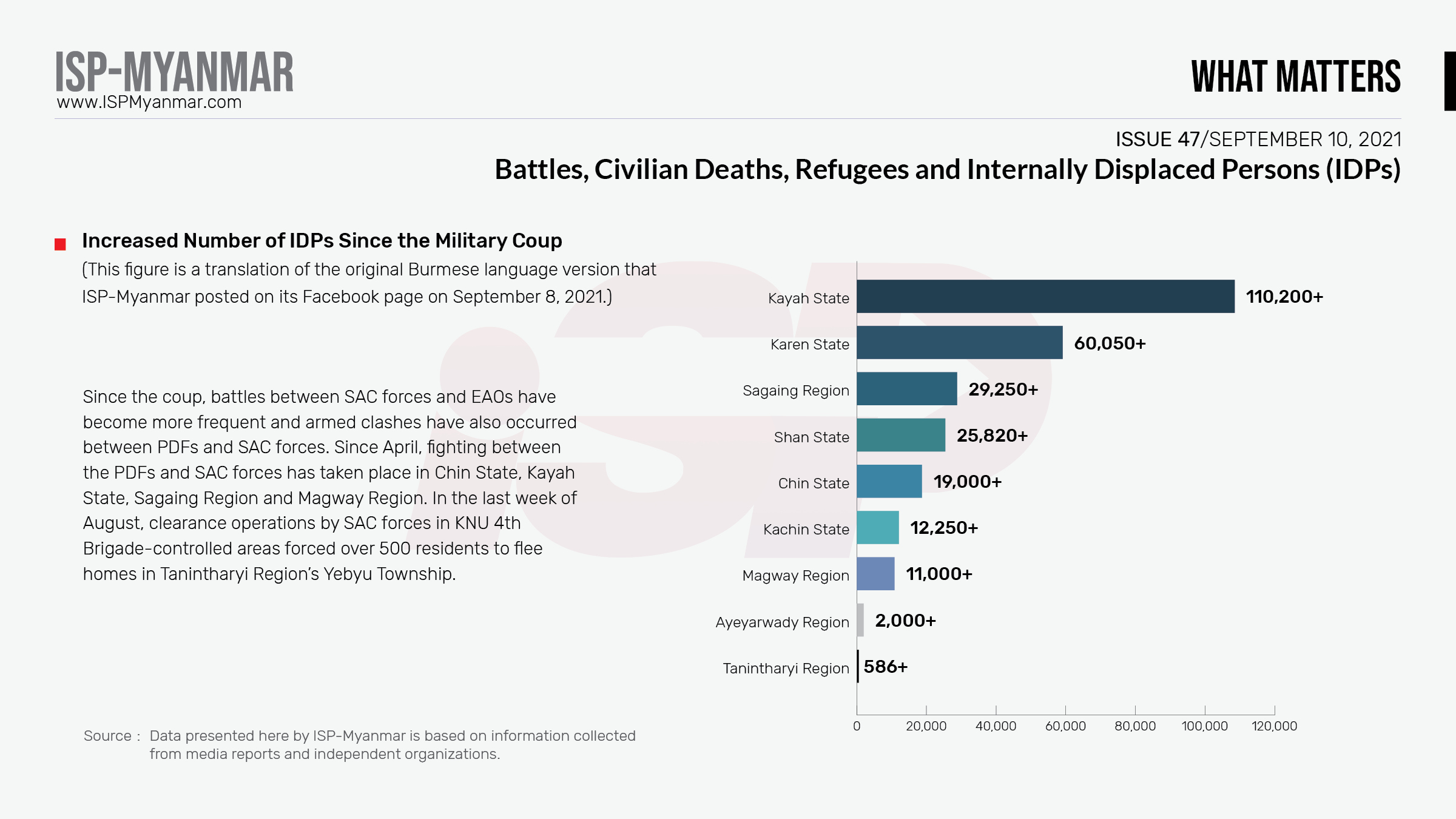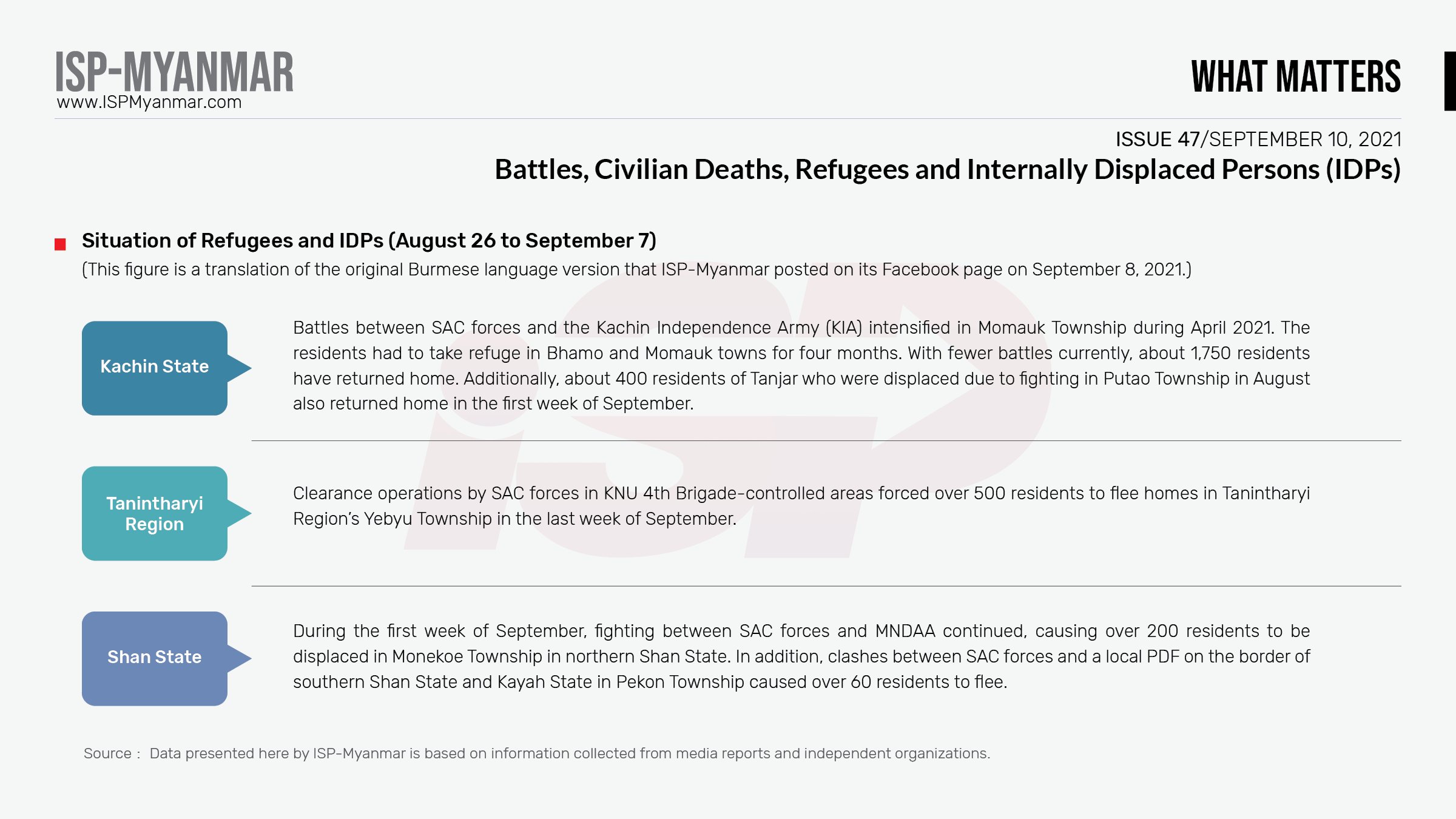What Matters No. 47
(This article is a translation of the original Burmese language version that ISP-Myanmar posted on its Facebook page on September 8, 2021.)
Various forms of mass protest against injustice have occurred across Myanmar since the military staged a coup d’état on February 1, 2021. Protests are still ongoing in a variety of different forms. In addition, armed conflicts are occurring between the Ethnic Armed Organizations (EAOs) and State Administration Council (SAC) forces in ethnic regions where those EAOs are based. Simultaneously, fighting between the People’s Defense Forces (PDFs) and SAC forces also erupted in some areas. When the National Unity Government (NUG) declared a state of emergency on September 7, urging the whole country to launch defensive armed resistance, more armed resistance activities emerged and there was an increase in clashes across the country.
∎ At Least 878 Instances of Clashes
At least 878 clashes have taken place since the military coup, including those in ethnic areas. The highest number of clashes occurred between the Karen National Union (KNU) and SAC forces in KNU-controlled areas of Karen State. The highest military tension and highest number of fights among the clashes that occurred in the first week of September were in KNU-controlled areas of Karen State and Tanintharyi Region. In addition, the Myanmar National Democratic Alliance Army (MNDAA) and SAC forces continued to clash in the Monekoe area in northern Shan State.
Clashes between local People Defense Forces and SAC forces were reported as well in southern Shan State, Kayah State, Chin State and Sagaing and Magway Regions. From April 1 to September 7, 2021, at least 111 clashes were reported between the SAC forces and PDFs in those regions.
∎ Over 171 Civilian Deaths
Armed clashes have resulted in more than 171 deaths and 138 injuries among civilians since the coup. Among them, 54 civilians were killed and 16 were injured amid the clashes and shootings between SAC forces and the local PDFs.
∎ Over 2,100 Refugees and IDPs Returned Home
Clashes in Shan State and Tanintharyi Region resulted in an increase in the number of refugees and IDPs by 850 people. However, over 2,100 IDPs from Kachin State have returned home. From January 1, 2020 to September 7, 2021, armed clashes have led to over 767,656 people becoming IDPs.Among the increased number of IDPs this week were over 500 from Tanintharyi Region’s Yebyu Township who fled due to clearance operations by SAC forces in KNU 4th Brigade-controlled areas. In addition, the clashes between MNDAA and the SAC forces in the Monekoe area displaced 200 more people. While the total number of IDPs has increased to over 760,000, more than 972,000 refugees live in other countries due to armed conflicts that took place before the coup. More than 880,000 Rohingya refugees live on the Bangladesh side of the Myanmar-Bangladesh border. An additional over 92,000 refugees are on the Thailand side of the Thai-Myanmar border.
What Matters No. 43 can be read here.
∎ Why does it matter?
By looking at conflicts and clashes, the number of civilians who were killed and wounded in those conflicts and clashes, how they were killed and wounded, as well as the number of people displaced, it is possible to examine whether or not armed forces have committed human rights violations from the perspective of transitional justice, and also to conduct research on human security issues.
∎ Other relevant readings
On-the-ground reports from ethnic news organizations and other independent media groups provide regular updates about conflict situations, their impact, and the collateral damage in the aftermath of the military coup. These include reports of renewed fighting in ethnic areas, civilian fatalities, and rising refugee and IDP issues on the ground. In addition, records and reports by United Nations organizations such as the United Nations Office for the Coordination of Humanitarian Affairs (UNOCHA), and other independent local and foreign organizations also provide information about the ongoing conflict situation in Myanmar.
